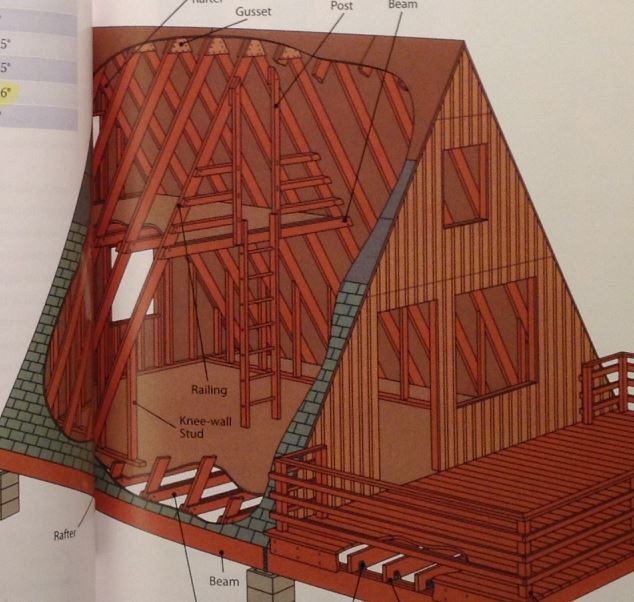Hello everyone,
I'm assessing a friend of mine who is an architect who is working on a project of an A-Frame cabin as in the attached picture, he is using some drawings and references form some do it yourself books and asked me to check the designs. I don´t have much experience on wood design buy do have decent experience on steel and concrete design.
I'm concerned about the lateral resisting system to wind loading. Can´t see any brace on the plane of the rafters. Is the external plywood supposed to provide lateral restraint working as sheer wall? I've seen other drawings in which no braces are provided. Any source of information regarding this is welcomed!
Another doubt is concerning the unbraced length of the rafters, being attached continuously to sheeting provides sufficient restraint as to consider it continuously braced, no LTB?
Thanks!!

I'm assessing a friend of mine who is an architect who is working on a project of an A-Frame cabin as in the attached picture, he is using some drawings and references form some do it yourself books and asked me to check the designs. I don´t have much experience on wood design buy do have decent experience on steel and concrete design.
I'm concerned about the lateral resisting system to wind loading. Can´t see any brace on the plane of the rafters. Is the external plywood supposed to provide lateral restraint working as sheer wall? I've seen other drawings in which no braces are provided. Any source of information regarding this is welcomed!
Another doubt is concerning the unbraced length of the rafters, being attached continuously to sheeting provides sufficient restraint as to consider it continuously braced, no LTB?
Thanks!!

